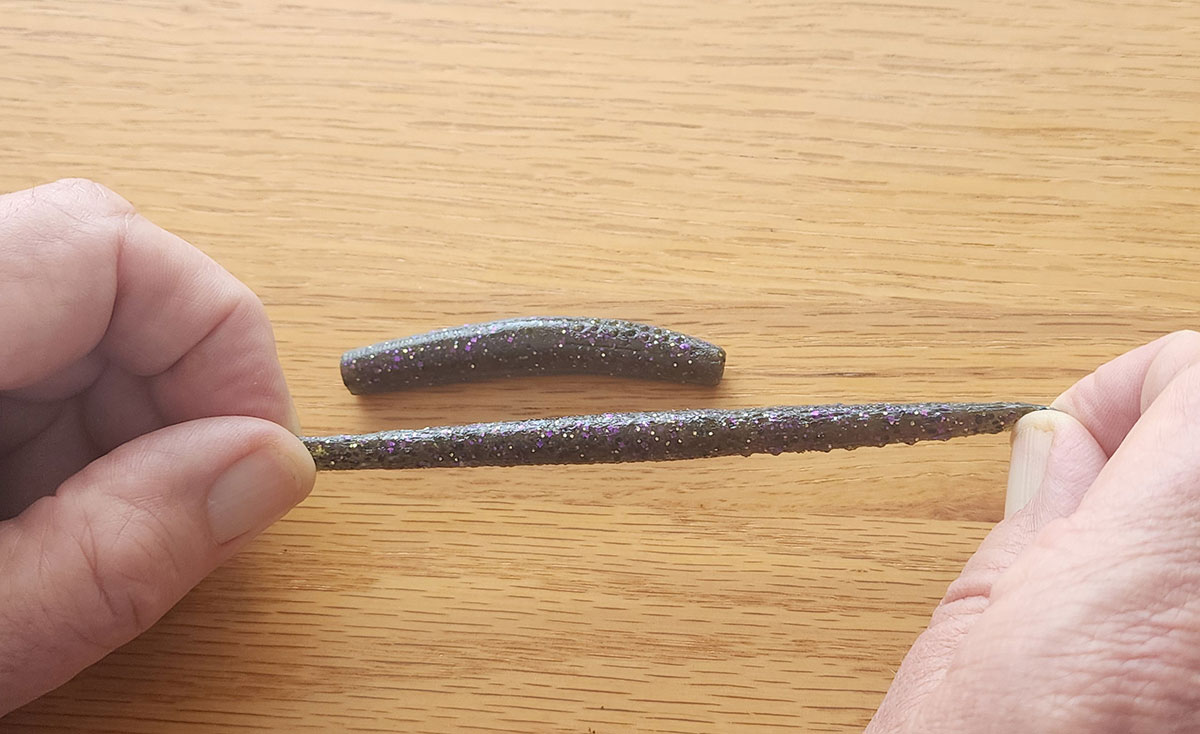- Details
BFHOF Report
The plaque wall at the Bass Fishing Hall of Fame will see three new additions in 2025, a trio that represents a cross section of industry pillars, including boat building, media, tournament organization and tackle innovation.
The Hall of Fame will welcome Randy Hopper, Craig Lamb and William Shakespeare Jr., who were selected from a diverse 20-person ballot by the Hall of Fame’s 30-member Selection Panel and living Hall of Fame inductees. A total of 81 ballots were distributed and 65 were returned, eclipsing last year’s total for most ballots submitted in a single year. The roster of Hall of Famers now stands at 103.
- Details
Seaguar Report

Soft plastic lures on jigheads are a time-tested way to catch many fish species.
Grubs, swimbaits, and many more soft plastic baits are perfect for a jighead and have been used for decades. Still, there is a renaissance now with minnow-style baits fished on a jighead thanks to the increasing popularity of forward-facing sonar.
Two noted experts with the jighead minnow, Bass Pro Tour anglers Drew Gill and Matt Becker, know it has a time and place and how much the right set-ups can affect your success. They each share some insight on selecting the right soft bait, jighead, rod, and line, as well as some tricks they've learned to entice more following bass to bite, which will help even if you are not using your electronics.
Minnows and Jighead choices
There are now countless soft plastic minnows to choose from, and each can serve a time and place, according to Becker and Drew. They each categorize them based on the style of fishing they are doing and body of water.
"I group them into styles; you have a standard size, which is going to be around 4 to 5 inches long like Big Bite Baits Scentsation Slim Minnow, and then bigger 6-inch baits like the Big Bite Baits Jerk Minnow that's for lakes where they're feeding on bigger forage," said Gill. "Then, your small ones are around 3 inches long that you can fish fast and work aggressively. I usually start with a 5-inch bait and can go up and down from there."
Becker also utilizes several bait sizes depending on the situation. "The 3-inch Yamamoto Scope Shad is a perfect snack size when they're eating those smaller threadfin shad, and they have a 4-inch size for times when the shad are a little bigger," he said. "Then, as you go up in size to other baits, you can start imitating bigger bait fish. I'll also go with a 6 or even 7-inch bait when I'm watching fish sitting around cover and need that drawing power for them to come get it."
Like soft plastics, both anglers agree that there is no perfect jighead or size. Each will often have multiple rigged and ready to go.
"It starts with the bait I plan on throwing because it has to have the right hook, weight, and action," said Becker. "There are so many good ones, like the tried and true Queen Tackle tungsten head, the Owner Range Roller, and the Austin Felix Dream Stroller with a welded loop to give the bait more rolling action. With weight sizes, I use everything from a ⅛-ounce to a ½-ounce depending on the situation and how deep the fish are."
- Details
By Louie Stout

Anglers tend to love having salt added to their lures, but did you know salt will affect the performance?
Heavily salted plastics will sink faster, and in many cases lie motionless on the bottom. That can be good in some applications. But sometimes you want to slow the fall or change how the bait reacts to the hook or jig head on which it’s attached.
That’s especially true in the buoyant Z-Man and other ElaZtech plastics (like the Strike Z-too) that have salt imbedded in them for taste/scent, extra casting weight and to offset its buoyancy, However, not all Z-Man baits have salt and some have more than others.
Lack of salt will allow Z-Man lures to fall slower and stand up when on the bottom.
You can alter the way your lure is presented underwater.
For example, to change the action on a TRD and to amplify tail buoyancy and underwater energy, stretch the back half of the bait until it begins to shed salt grains. Or, to change its posture on a dropshot (tail up or tail down), simply stretch either end of the bait to increase its buoyancy. Give it three or more good stretches until you observe salt leaving the bait’s body.
Also, if you use an oil based fish attractant, you can put the modified TRD in a bag with the attractant and the tiny holes (that once held the salt) will absorb the attractant and last longer.
Keep in mind that, like all salt-impregnated plastics, the salt will dissolve in the water after extended use. So, if one of your frequently used salted baits looks different in the water than it did initially, that may be the reason.





